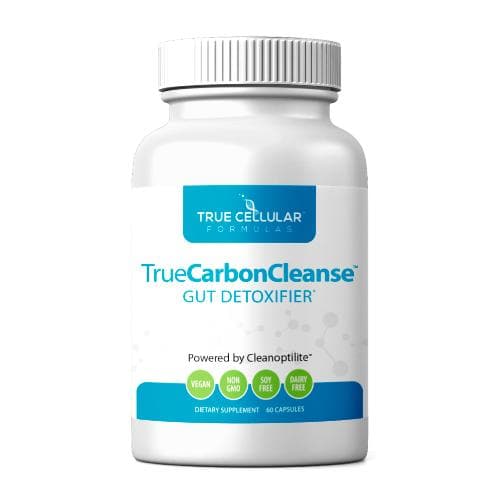
Spring Cleaning 101: Removing Toxins From Your Body and Home (Part 2)
Share
In Part 2 of our special report on Spring Cleaning, we discuss more of the hidden toxins in our homes, their dangers, and the best ways to remove them. We also list powerful all-natural supplements that can help remove toxins from the body.
Bedding and Mattress
The materials used in our bedding are often made with toxic materials. Here are the most common and how they could impact the body:
- Polyester bedding. Polyester is a plastic blended with other materials to make it feel natural to the touch. Antimony (Sb), a chemical element often used to make polyester clothing, was found to have a potential health risk above the 10% safety level for contact with the skin.[1] In addition to Sb, polyester can be treated with formaldehyde, which could trigger adverse respiratory reactions.
- Flame-retardant bedding. TBBPA, PBDEs, and brominated flame retardants are common chemicals used in flame retardant bedding. Preliminary studies indicate long-term exposure to flame retardant chemicals could increase the risk of cellular damage and tumor growth.[2]
Avoiding Toxic Bedding
When purchasing a mattress and bedding, consider 100% organic cotton sheets. In addition, make an effort to avoid these bedding ingredients:
- Wrinkle free
- Latex
- Polyester
- Flame-retardant
- Flame-resistant
- Vinyl waterproofing
Note: For those with these items, consider opening a window 15-30 minutes before bed to help air out the room. Another option is to put houseplants in the bedroom and other rooms throughout the house. (See the 1st installment for more information on plants).
Toxins and Drinking Water
While tap water in most modern cities is chemically treated and considered safe for drinking, it may still contain dangerous toxins. Waterborne diseases are still a leading cause of death in many parts of the world, and some areas may have higher levels of fluoride, arsenic, or other contaminants in the drinking water.
A problem around the world is the increasing amount of microplastics in both bottled and tap water. Due to their small size, microplastics tend to evade the water-treatment process and have been found in most water environments. [3] Human exposure to microplastics has been detected in many parts of the body:[3]
- Lung tissues
- Human placenta
- Saliva
- Face, skin, hair, hands
- Human feces
- Nasal mucous
- Colon
- Blood
Preliminary studies indicate the long-term accumulation of microplastics can increase the risk of inflammation, metabolic problems, and chronic lung issues.[3]
Removing Toxins from Tap Water
One of the best ways to decrease the amount of toxins in your drinking water is by using a water filter. There are several options to choose from:
- Faucet mount filter
- Carbon filter pitcher
- Home water filtration systems
To see the water filtration systems from Revelation Health, click HERE
Toxins in Food
The food we consume can have a variety of hidden toxins. Here are a few common toxins that may have an impact on long-term health:
|
Ingredient |
Common Uses |
Potential Side Effects |
|
Artificial food coloring/dyes |
|
|
|
Genetically Modified Organisms (GMOs) |
|
|
|
Acrylamide |
|
|
|
Pesticides |
|
|
|
Sodium nitrite/nitrate |
|
|
These are just a few of the potential toxins found in foods. Here are a few ways to decrease exposure to toxins in food:
- Opt for organic food
- Reduce consumption of processed, canned, and packaged foods
- Avoid foods with artificial flavors and colors
- Shop local farmer’s markets for fresh fruits and veggies
- Eat grass-fed beef and cattle
Note: The human body is in a constant state of detox, removing toxins when we sweat, go to the bathroom, and exhale. Getting adequate sleep, drinking plenty of water, and eating various fresh fruits and veggies can help the body naturally remove toxins via the liver, kidneys, lungs, and skin. Keeping the body healthy increases its ability to remove the toxins and pathogens we encounter daily.
Toxins in Pesticides
In addition to some of the foods we consume, pesticides are in our homes as well, primarily used to kill or control a variety of pests:
- Insect repellants – Insecticides
- Pest control – flea and tick killers
- Germ killers – household cleaners and disinfectants
- Rodent bait – rat poison
- Weed killers – herbicides
- Mold and fungus killers – fungicides
Most pesticides are sold as liquids, sticks, sprays, foggers, or crystal balls. According to the US Environmental Protection Agency (EPA), 75% of U.S. households used at least one pesticide product in their home within the past year, and more than 79,000 children were suffering from household pesticide exposure or poisoning.
Studies on pesticides report nearly 300,00 deaths occur due to pesticide poisoning annually. Pesticides are believed to increase the risk of many health issues, including DNA damage, reproductive issues, neurological disorders, and tumor growth.[4]
Reducing Pesticide Exposure
- When using common pesticides in the home, try these tips:
- Mix or dilute the pesticide outdoors
- Do not store pesticides inside the home
- Dispose of unwanted/extra pesticides in tight, leakproof containers
- Change clothes immediately after using pesticides and segregate them from other clothes
- Increase ventilation when using indoors (open windows)
Natural pesticides are also available. The following have been used to combat a variety of pests in the home and garden:
- Dish soap
- Apple cider vinegar
- Boric acid
- Eucalyptus
- Chili pepper
- Baking soda
- Garlic
- Salt
- Fennel
- Rosemary oil
- Catnip
All-Natural Detox Supplements
In addition to removing toxins from the home, we must also remove them from the body. The following supplements are designed to remove many of the harmful toxins we encounter from the body:
BIND - Toxin Elimination
BIND - Toxin Elimination provides a unique blend of activated charcoal, powerful humates, and healthy botanicals. These ingredients bind to toxins, which prevents them from being reabsorbed and escorted out of the body when going to the bathroom.
Here are a few benefits of BIND: 
- Absorbs up to 300x its weight in toxins
- Provides beneficial fiber
- Contains over 70 plant-based source minerals
- It doesn’t interfere with the absorption of nutrients in the intestines
- Could lower the body’s toxin exposure by 60%
TrueCarbonCleanse™ - Gut Detoxifier
TrueCarbonCleanse™ - Gut Detoxifier helps to support the body’s natural ability to remove harmful toxins from the body. This product contains Cleanoptilite™ (Clinoptilolite), a new Crystalline Zeolite Nutrient that scrubs heavy metals and other toxins from cells via a patent-pending cleaning process.
TrueCarbonCleanse™ - Gut Detoxifier is all-natural, containing many other powerful ingredients that bind to toxins: 
- Apple fiber – assists with the absorption of pollution and its elimination
- Magnesium Oxide – infuses the intestines with water, which helps to dilute the toxic load and flush out harmful pathogens.
- Baozene® Baobab Fruit Powder – has a high pectin content (which can bind to heavy metals), which helps the body eliminate toxins by promoting a healthy gastrointestinal tract
GI Detox Gentle and Effective Cleanse
GI Detox Gentle and Effective Cleanse helps restore the body’s delicate microbial balance by removing toxins and other harmful debris. This product contains pyrophyllite healing clay and activated charcoal, making it one of the best detox products of its kind.
Key benefits include the following: 
- Assists in binding to metals and other harmful toxins
- May be useful for consuming food or water that has bacteria or has been compromised
- May offer nutritional support for mold and mycotoxin removal
Summary
Every day, we are bombarded by many forms of toxins. Many of us may be sick, not realizing the source of our health issue comes from exposure to toxins. We must understand what toxins are out there, how they impact the body, and ways to protect ourselves from them. Give your home a spring cleaning today. Your body will thank you.
References:
- Joaquim Rovira 1, Martí Nadal 2, Marta Schuhmacher, (et al). Human exposure to trace elements through the skin by direct contact with clothing: Risk assessment. Environ Res. 2015 Jul:140:308-16. doi: 10.1016/j.envres.2015.03.032. Epub 2015 Apr 16. [PMID: 25889781].https://pubmed.ncbi.nlm.nih.gov/25889781/
- Kate Hoffman 1, Amelia Lorenzo 1, Craig M Butt, (et al). Exposure to flame retardant chemicals and occurrence and severity of papillary thyroid cancer: A case-control study. Environ Int. 2017 Oct:107:235-242. doi: 10.1016/j.envint.2017.06.021. [PMID: 28772138].https://pubmed.ncbi.nlm.nih.gov/28772138
- Isabella Gambino,† Francesco Bagordo,† Tiziana Grassi, (et al). Occurrence of Microplastics in Tap and Bottled Water: Current Knowledge. Int J Environ Res Public Health. 2022 May; 19(9): 5283. Published online 2022 Apr 26. doi: 10.3390/ijerph19095283. [PMID: 35564678].https://www.ncbi.nlm.nih.gov/pmc/articles/PMC9103198/
- Akash Sabarwal, Kunal Kumar, Rana P Singh. Hazardous effects of chemical pesticides on human health-Cancer and other associated disorders. Environ Toxicol Pharmacol. 2018 Oct:63:103-114. doi: 10.1016/j.etap.2018.08.018. Epub 2018 Sep 1. [PMID: 30199797]. https://pubmed.ncbi.nlm.nih.gov/30199797/
